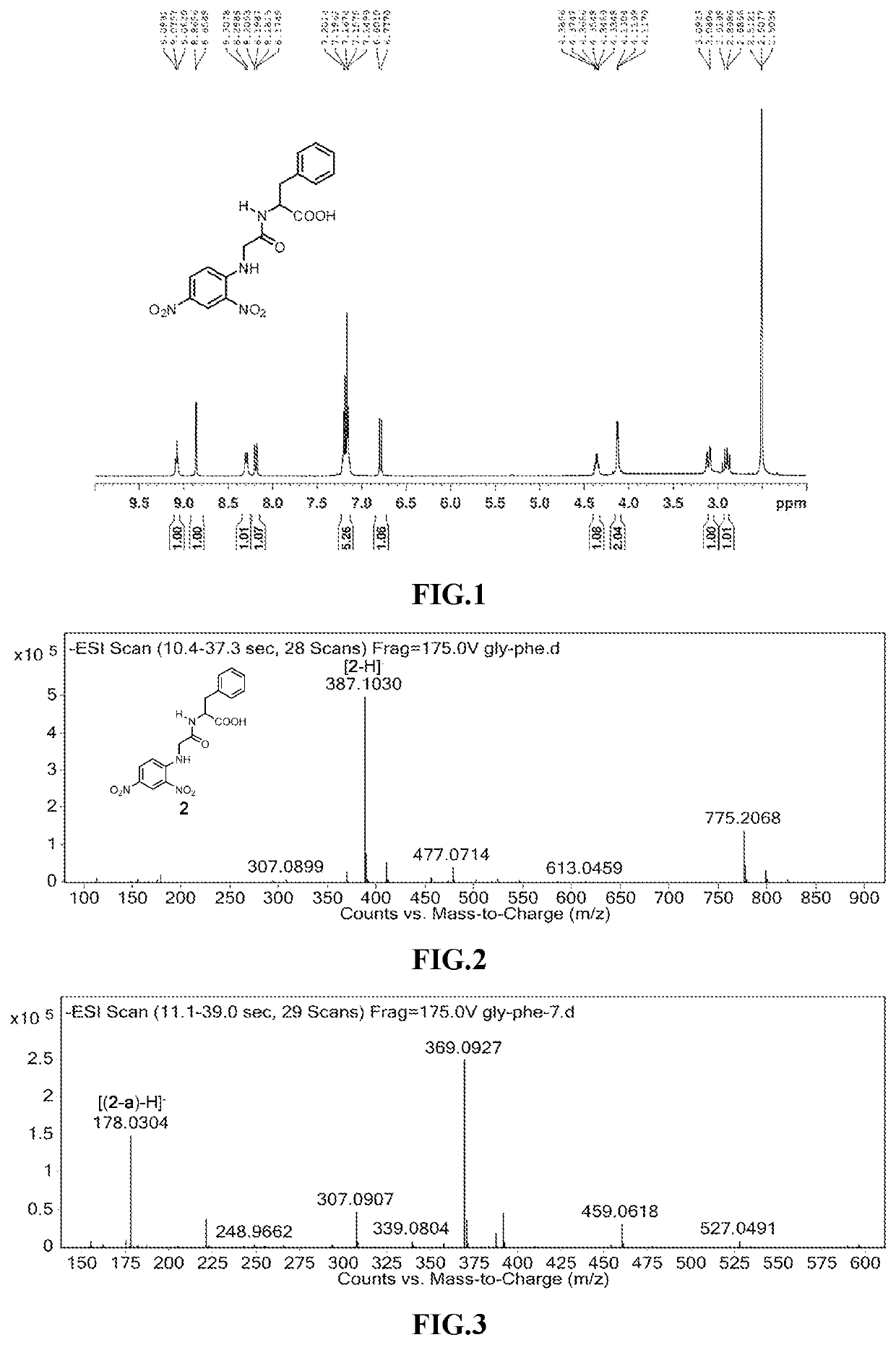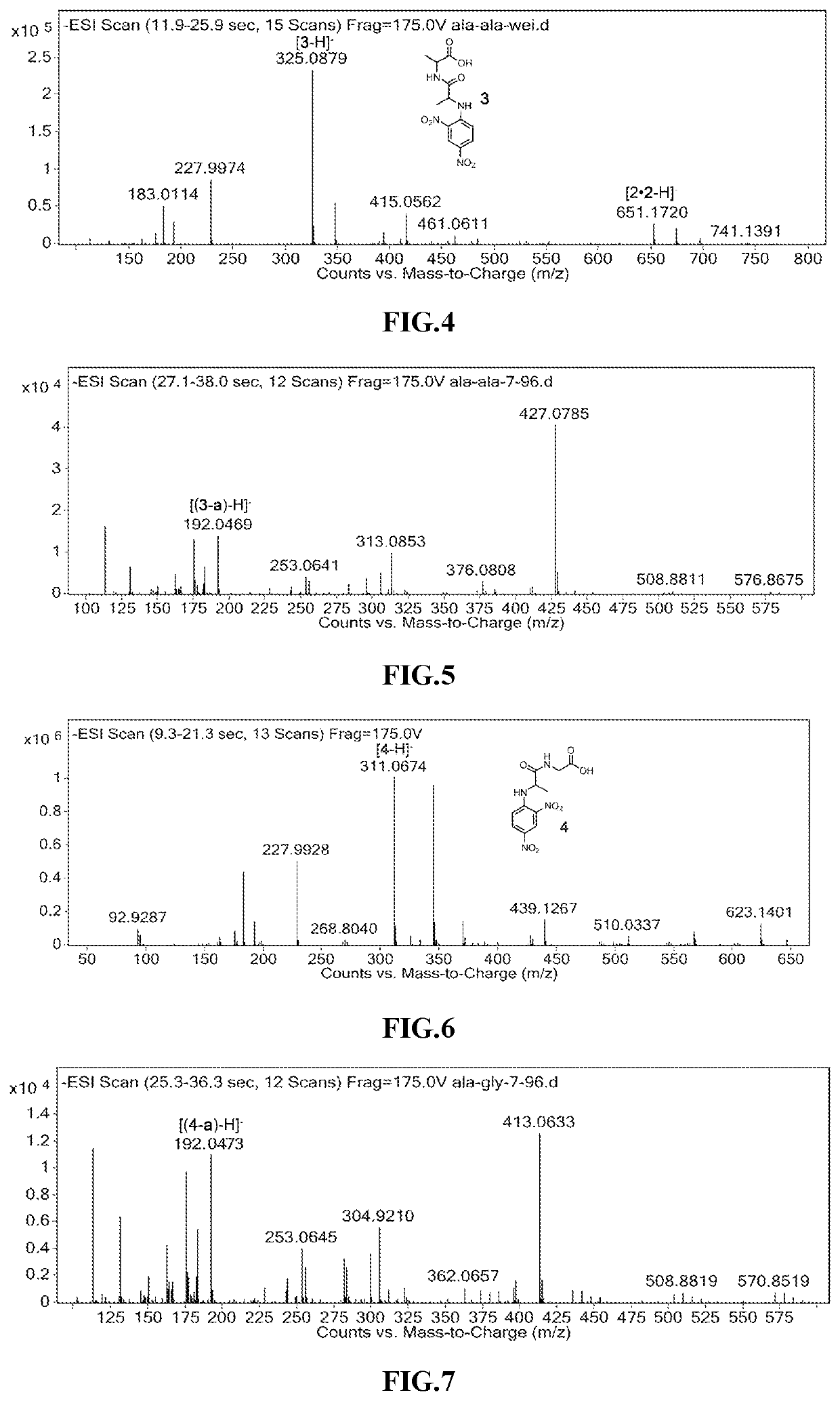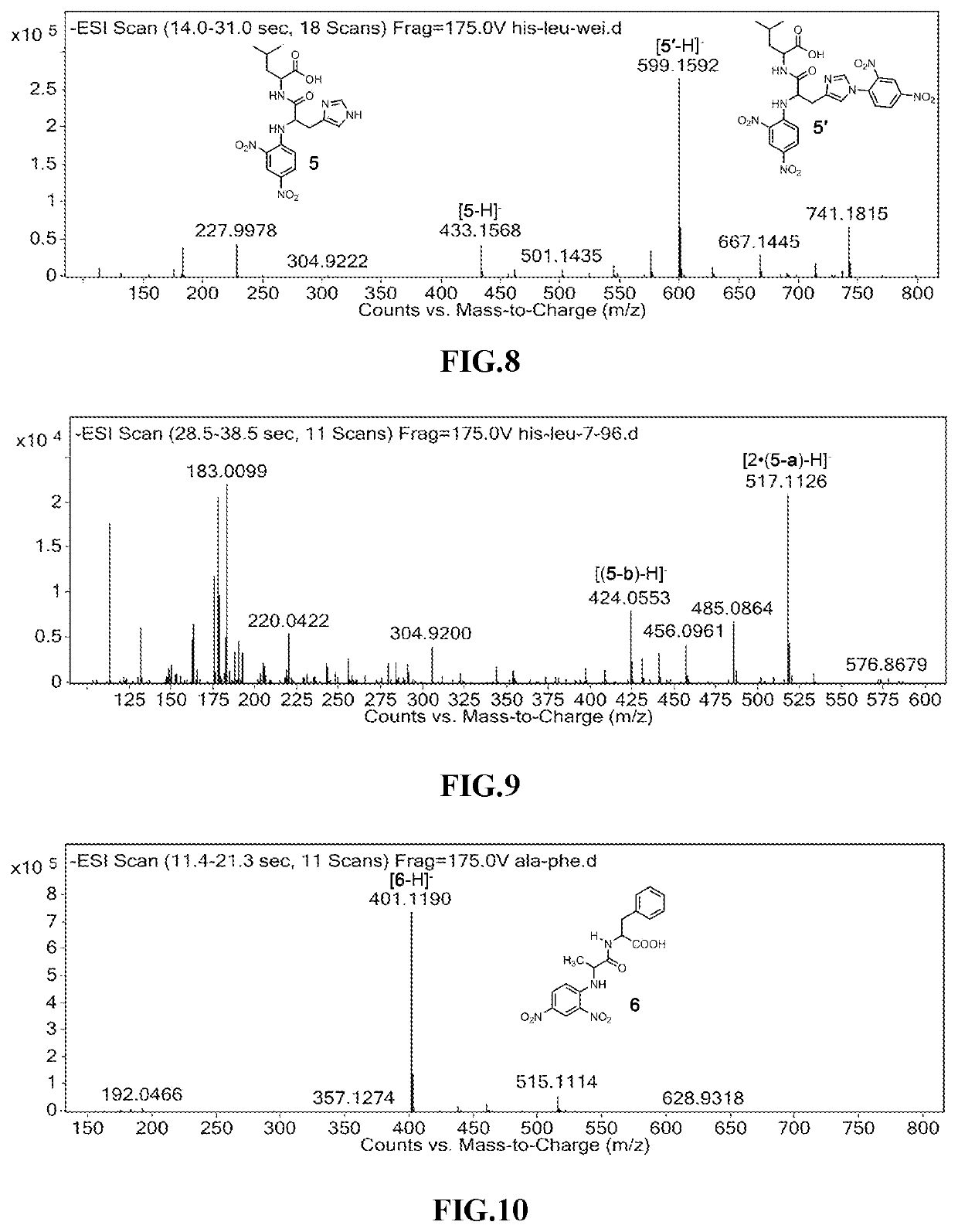Method for photocleavage of amide bonds
a technology of amide bond and photocleavage method, which is applied in the preparation of carboxylic acid amides, organic chemistry, peptides, etc., can solve the problems of more severe conditions and the most difficult breakage of amide bonds
- Summary
- Abstract
- Description
- Claims
- Application Information
AI Technical Summary
Benefits of technology
Problems solved by technology
Method used
Image
Examples
example 1
[N-(2,4-dinitrophenyl)-L-glycyl]-L-phenylalanine, GLY-PHE
[0041]
[0042]L-glyto-L-phenylalanine (0.48 g, 2.16 mm) and NaHCO3 (0.3629 g, 4.32 mm) were dissolved in 25 mL deionized water, and (0.45 g, 2.41 mm) 2,4-dinitropylfluorice was dissolved in 10 mL of ethanol solution, and the two were mixed in a 100 mL round bottom flask. The mixture was stirred and refluxed at 80° C. under darkness for 5 h. After spin-drying, 0.75 g of the yellow solid product was separated by a chromatographic column using chloroform and methanol as the eluent, i.e., [N-(2,4-dinitrophenyl)-L-glycyl]-L-phenylalanine (1H-NMR spectroscopy and high-resolution mass spectrum are shown in FIG. 1 and FIG. 2). 0.01 mmol of [N-(2,4-dinitrophenyl)-L-glycinoyl]-L-phenylalanine was dissolved in 10 mL of HPLC methanol solution. The 1 mmol / L standard solution was prepared, 10 μL of the standard solution was added to 290 μL of deionized aqueous solution (pH=7), and mass spectrum data was recorded after 365 nm ultraviolet light...
example 2
[N-(2,4-dinitrophenyl)-L-alanyl]-L-alanine, ala-ala
[0043]
[0044](0.15 mM) L-alanyl-L-alanine and (0.3 mm) NaHCO3 were dissolved in 3.5 mL of deionized water, (0.18 mM) 2,4-dinitrofluorobenzene was dissolved in 2.5 mL of ethanol solution, and the two were mixed in a 25 mL flask, and the mixture was stirred at 50° C. under darkness for 4 h to obtain a yellow mixture. 5 μL of the mixture was added to 10 mL of the deionized aqueous solution (pH=7) to give the solution to be photolyzed. The characteristic peak of [N-(2,4-dinitrophenyl)-L-alanyl]-L-alanine (compound 3) can be clearly observed from the mass spectrum of the solution to be photolyzed (see FIG. 4)). 200 μL of the solution to be photolyzed was placed in a glass 96-well plate, irradiated with 365 nm ultraviolet light for 10 min, the mass spectrum data was recorded, and the characteristic mass spectrum peak of 2-methyl-5-nitro-1H-benzo[d]imidazole-3-oxide (3-a) can be clearly observed (see FIG. 5).
example 3
[N-(2,4-dinitrophenyl)-L-alanyl]-L-glycine, ala-gly
[0045]
[0046]In the same conditions as in Example 2, L-alanyl-L-glycine was reacted with 2,4-dinitrofluorobenzene, and the characteristic peak of [N-(2,4-dinitrophenyl)-L-alanyl]-L-glycine (compound 3) can be clearly observed on the mass spectrum data after the reaction (see FIG. 6). Under the same conditions as in Example 2, the compound 3 was subjected to a photocleavage reaction, the characteristic peak of 2-methyl-5-nitro-1H-benzo[d]imidazole-3-oxide (3-a) can be clearly observed on the mass spectrum after the photoreaction (see FIG. 7).
PUM
| Property | Measurement | Unit |
|---|---|---|
| Temperature | aaaaa | aaaaa |
| Time | aaaaa | aaaaa |
| Time | aaaaa | aaaaa |
Abstract
Description
Claims
Application Information
 Login to View More
Login to View More - R&D
- Intellectual Property
- Life Sciences
- Materials
- Tech Scout
- Unparalleled Data Quality
- Higher Quality Content
- 60% Fewer Hallucinations
Browse by: Latest US Patents, China's latest patents, Technical Efficacy Thesaurus, Application Domain, Technology Topic, Popular Technical Reports.
© 2025 PatSnap. All rights reserved.Legal|Privacy policy|Modern Slavery Act Transparency Statement|Sitemap|About US| Contact US: help@patsnap.com



